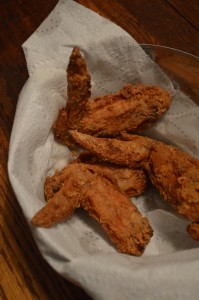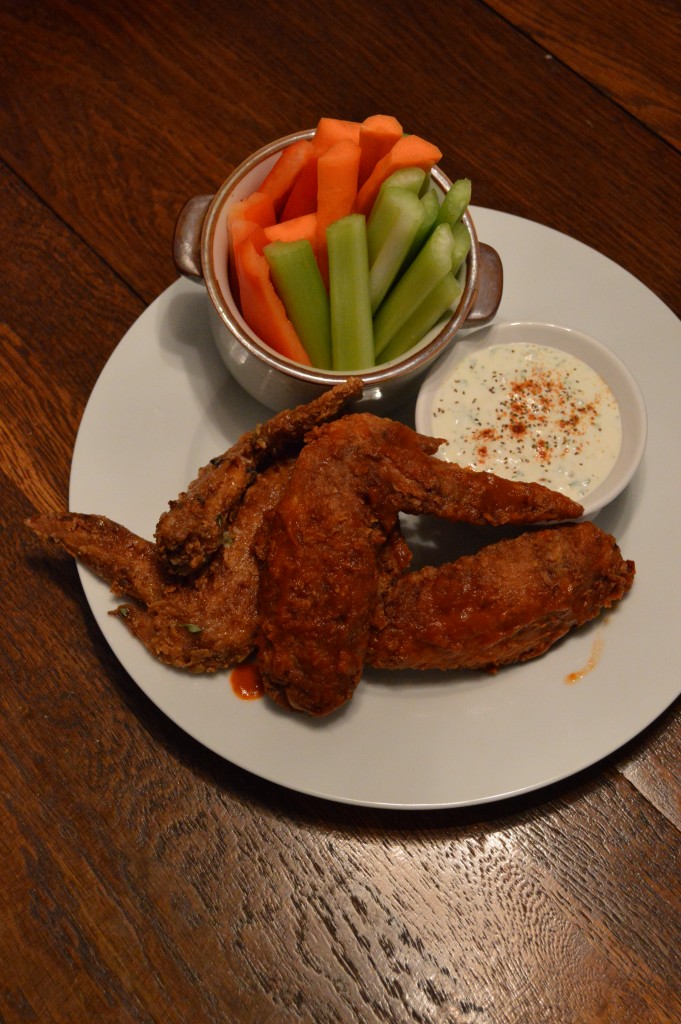 Buying whole animals forces you to eat their various components in rigid proportion.
Buying whole animals forces you to eat their various components in rigid proportion.
For instance, if you go out on a Wednesday and eat two dozen chicken wings, you have eaten the upper appendages of six chickens. If you had to purchase those chickens as whole birds, you would then be stuck with a dozen breasts and a dozen legs that you would need to consume before you ever ate wings again.
All this to say I don’t prepare chicken wings at home very much. But I love them, and sometimes I’ll squirrel away the wings from my chickens, accumulating them over several months, until I have enough to justify preparing them bar-style.
Anatomy of a Chicken Wing. If you were confused by the statement above that each bird yields four wings, this is because we divide each of the bird’s wings in two: the first segment, closest to the breast of the chicken, is the drumette; the second, farther from the body, is the wingette. These are the two types of meat that you get when you order wings at a bar. The drumette looks like a little drumstick. It has one bone through the centre, and the meat is on the pale, lean side. The wingette has two slender bones arching within, and the meat is a bit darker, and for my money, juicier.
There is actually a third section of the chicken wing, the wing tip. This is always removed in western restaurants, but is usually left attached to the wingette in Korean and Japanese restaurants. If you think that the best part of the chicken wing is the crispy, tacky, saucy crust, you should consider finding wings with the wingtip still attached, as you’ll increase your crust-to-meat ratio.
Cooking Method. Bar wings are made just like fried chicken: the meat is marinated, then dredged with flour and deep fried in oil.
Sauces. Most chicken wings are then coated with sauce while they are fresh out of the fryer.
“What about salt and pepper wings? They don’t have sauce on them.”
I’m going to pretend you didn’t just bring up salt and pepper wings.
Un-sauced wings are fine. I like plain fried chicken as much as the next guy, but sauce is what makes chicken wings. At the bar you can smell when the group three tables over gets their platter of wings because the air is redolent of the chili and vinegar in the sauce. That’s what I like about wings.
My two favourite sauce flavours are “hot” and honey garlic. You can make a fantastic honey garlic drizzle at home. Just heat honey in a small pot, then add garlic grated fine with a microplane, some dried herbs like thyme and savoury, and a splash of cider vinegar.
Dipping Sauce. Wings are often served with a ranch-type dipping sauce. You take your saucy wing and dip it in yet another sauce. It doesn’t make sense. It shouldn’t be good, but it is. A simple dipping sauce can be made at home by combining mayonnaise and sour cream, then flavouring with garlic and herbs.
The perfunctory celery and carrots seem like a clumsy way to add some vegetables to the meal, but they, too, are perfect. A cool crunch between firey heat.
